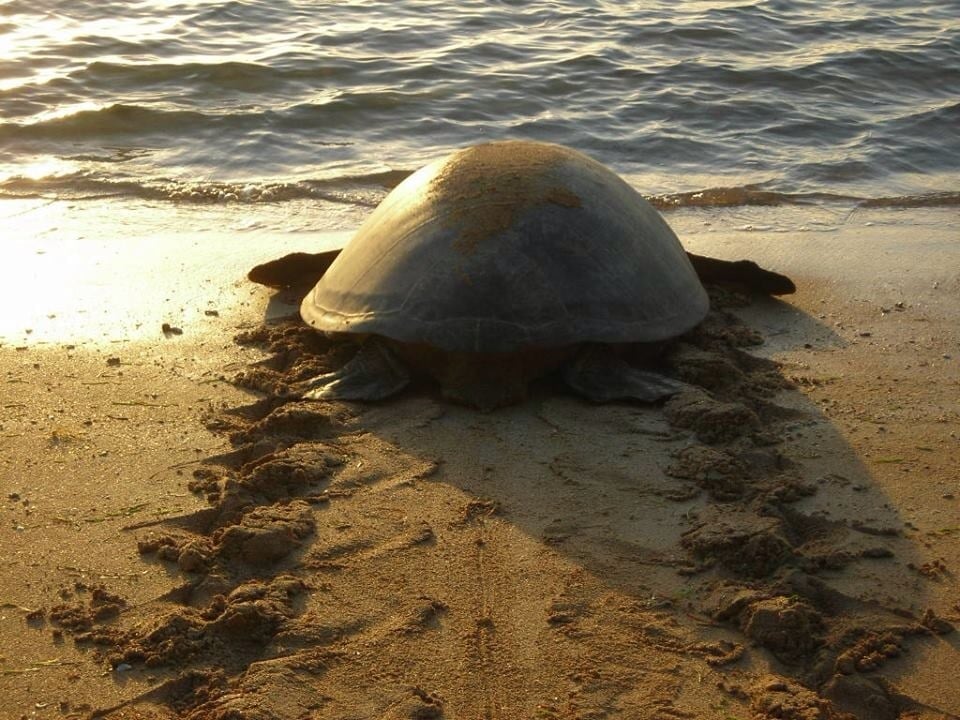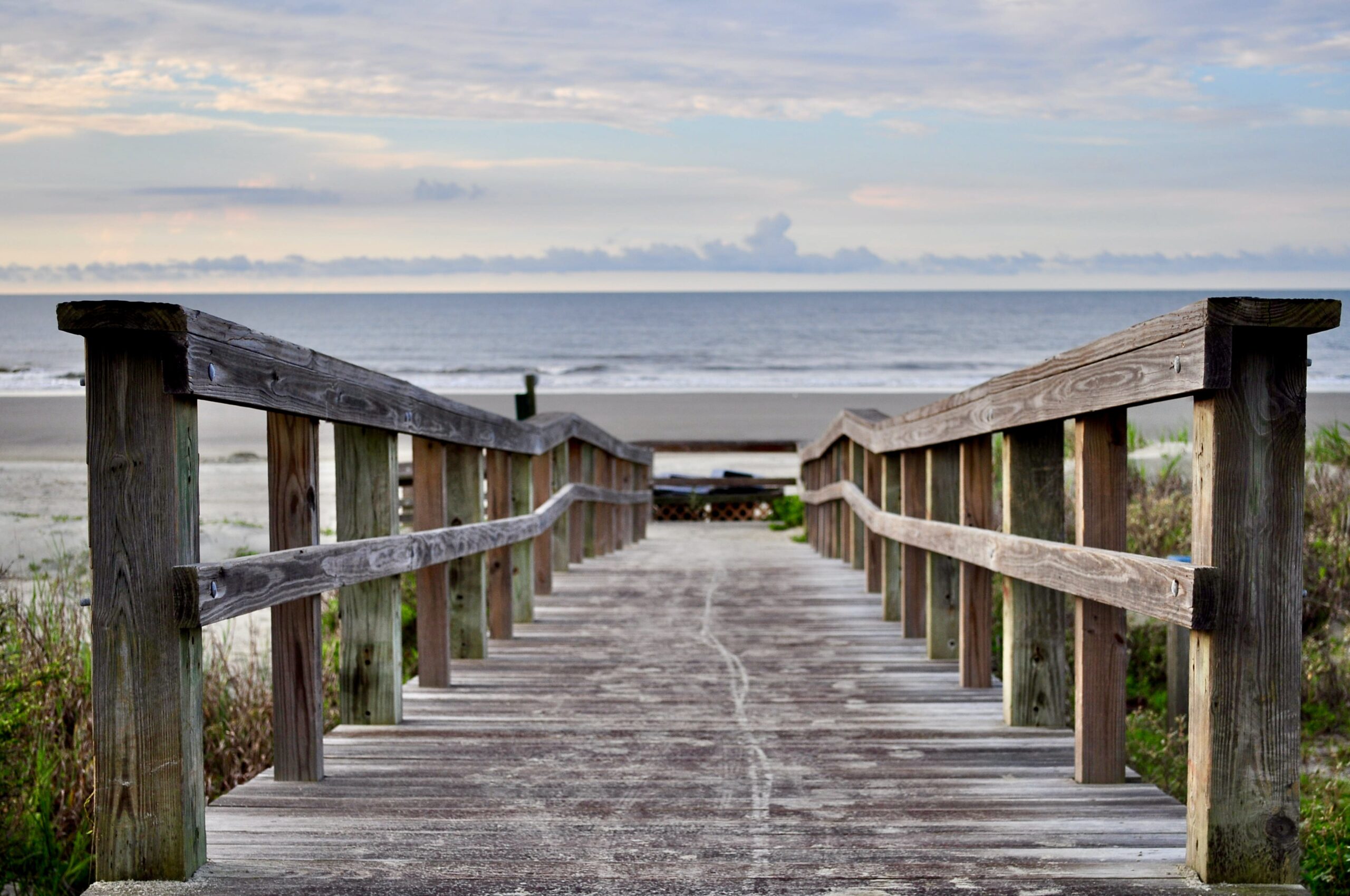Turtle Patrol: Hatching Season
September 21, 2020

This is the second half of our series on Kiawah’s esteemed Turtle Patrol program. For the story about Nesting Season earlier this year click here.
Another successful loggerhead nesting season on Kiawah recently concluded. This year, 345 nests were identified along the island’s rustic beachfront. Through the end of October, this buried treasure has the potential to produce approximately 30,000 baby turtles. That sounds like a lot until you realize only one in a thousand will reach adulthood.
HEROES FOR HATCHLINGS
Right from the start the odds are stacked against them, beginning with turtles’ drop-and-run (well, drop-and-slowly-crawl-away) approach to parenting. But fear not little ones, herpetology heroes are on the scene. Clad in their official bright blue t-shirts (the color changes each year), Hatching Patrol volunteers are trained with special superpowers to help you make it from the close confines of your egg to the vast wonderment of the ocean.
Who are these guardian angels? The Hatching Patrol is a mix of Kiawah Island homeowners (including from our Timbers family) and quite a few vacationers who plan their visits to coincide with the endeavor. Throughout the season they will wear many hats. We don’t just mean baseball caps, sporty visors, and wide-brim floppy straw hats. We mean they’ll play the role of wildlife defender, sand engineer, pole and flag code linguist, running coach, and contributing scientist.
IN FOR THE LONG GAME
Once the Nesting Patrol has marked it, the identification card and care for each buried nest transfers to the Hatching Patrol. Loggerhead eggs incubate roughly 55 days. During this time the Hatching Patrol is very busy, playing both a zone and man-to-man (i.e. nest-to-nest) strategy to keep them safe.
At first light, on foot, each team surveys their respective zone. They remove excessive sand buildup and soften compaction over nests that could prevent hatchlings from reaching the surface. They record data for nests that are disrupted, washed over, or destroyed. They apply or reposition mesh screens to protect from interference and predators. As the season progresses, the excitement mounts as they start to see and document evidence of hatchings the night before.

REACHING THE BOILING POINT
When a loggerhead egg hatches, it remains underground for three days until its shell straightens out and the orifice where the yolk sac was attached closes. At just a few days old they understand there is safety in numbers and the hatchlings will emerge as a group. Their simultaneous rises to the surface make the sand look like it is bubbling which is why emergences are also called “boils”. A small depression over the nest cavity occurs when the hatchlings leave their eggs, but a larger “crater” occurs when the whole crew actually emerges from the nest. The distinct vertical edges of this crater, along with hatchling tracks from it, indicate they’ve left.
A HELPING HAND
While emergence typically occurs at night, during the day the patrol may discover hatchlings struggling to get out or disoriented en route to the sea. Hatchlings navigate to the ocean using the reflection of moonlight on the water. They are easily distracted by man-made lights (homes, flashlights) which can draw them in the wrong direction, causing them to get lost. Or they encounter an obstacle — sandcastle mounds that weren’t properly destroyed at the end of the day, holes dug on the beach that weren’t responsibly filled back in, trash, etc. Regardless how it happened, now these baby turtles are in a precarious predicament and it’s the Hatching Patrol to the rescue.
Wearing gloves, as they do for all their work, Hatching Patrol team members will collect the stragglers and place them 10-40 feet from the ocean to complete the journey. It’s important the baby turtles travel across the beach and enter the water on their own. This helps them orient to the oncoming waves and imprint on the magnetic field of the Earth.

PREPARING FOR LAUNCH
Using their feet to keep the baby turtles from deviating off course, the ever-vigilant Hatching Patrol volunteers hover over them to provide shade from the dangerous sun and wave off birds looking for an easy meal. As often as not, a crowd of people gathers. The runway becomes a red carpet with nature fans on either side, an admiring paparazzi wielding their smart phones for photos and video. (No flash please, for obvious reasons.) The soundtrack is always the same: gleeful chatter punctuated with “awwwwwwwww…”.
DILIGENT DATA
Whether there’s a show or not, the Hatching Patrol has more work to do. Three days after an emergence they’ll examine and catalog the nest’s contents and refill the cavity. They do the same for all the nests at some point.
In early November, the numbered white poles, wood stakes, and red flags of all the nests are taken up. (During the season the flag is regularly repositioned to communicate to other patrol members from a distance what stage the nest is in.) Detailed records are kept of all activities and a report is prepared annually for the South Carolina Department of Natural Resources.
Kiawah’s Turtle Patrol program is an incredible success thanks to the devoted volunteer team, but also the efforts of conscientious everyday beachgoers.
LET’S HELP LOGGERHEADS
• Respect nesting sites.
• Stay out of the dunes (dogs too!)
• Flatten sand castles and fill in holes before leaving the beach.
• Abstain from using flashlights (including your phone) on the beach.
• Purchase one of Timbers’ limited edition Peter Millar beach cruisers.
• Don’t touch or interfere with baby turtles without a permit. It’s illegal.
• Alert the Turtle Patrol (843-768-6001) if you find a turtle needing assistance.
An extra special thank you to Lynne Sager of the Kiawah Island Turtle Patrol for the wonderful photos and for being our second set of eyes to ensure that our readers are receiving accurate turtle information!







